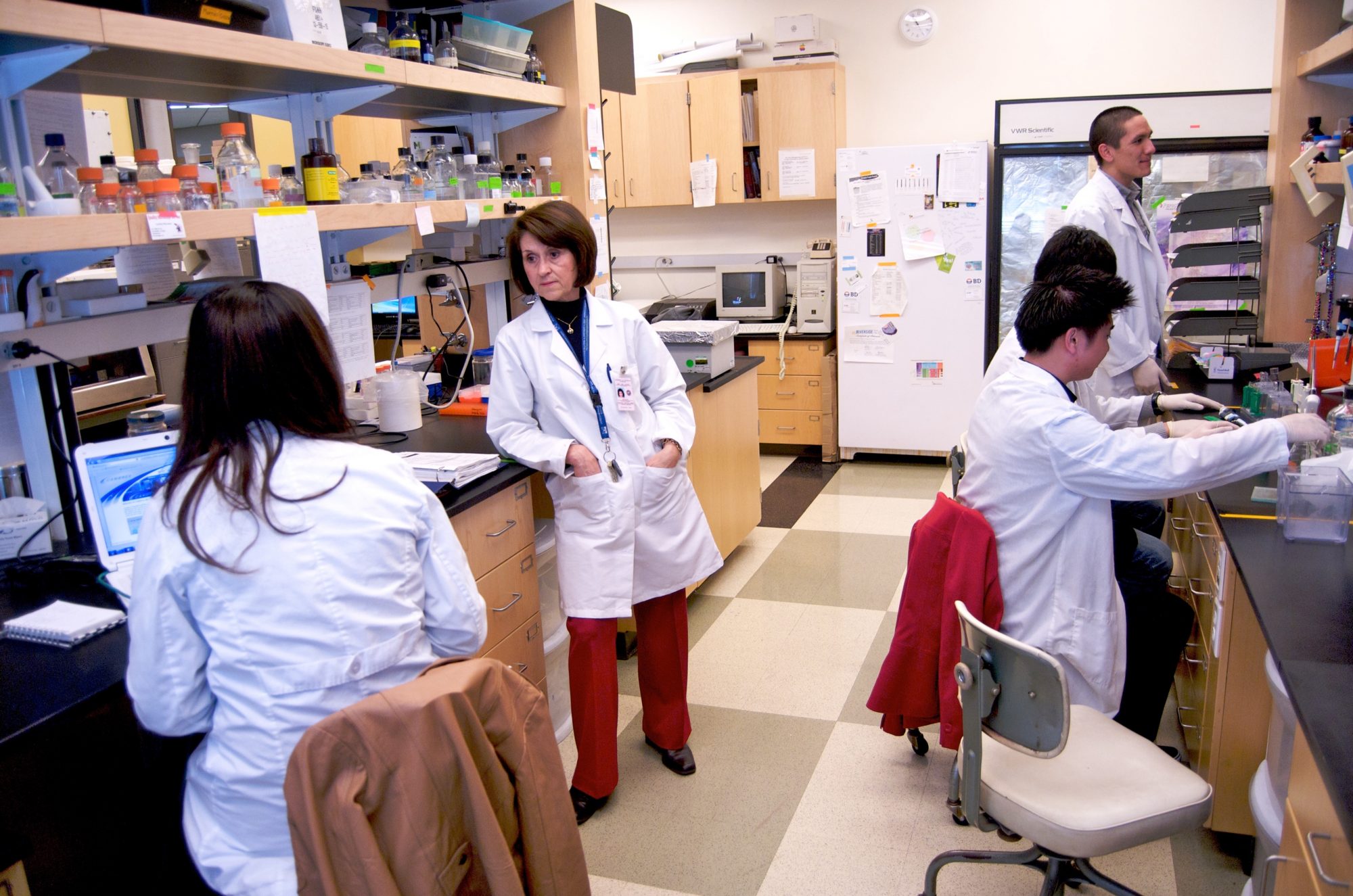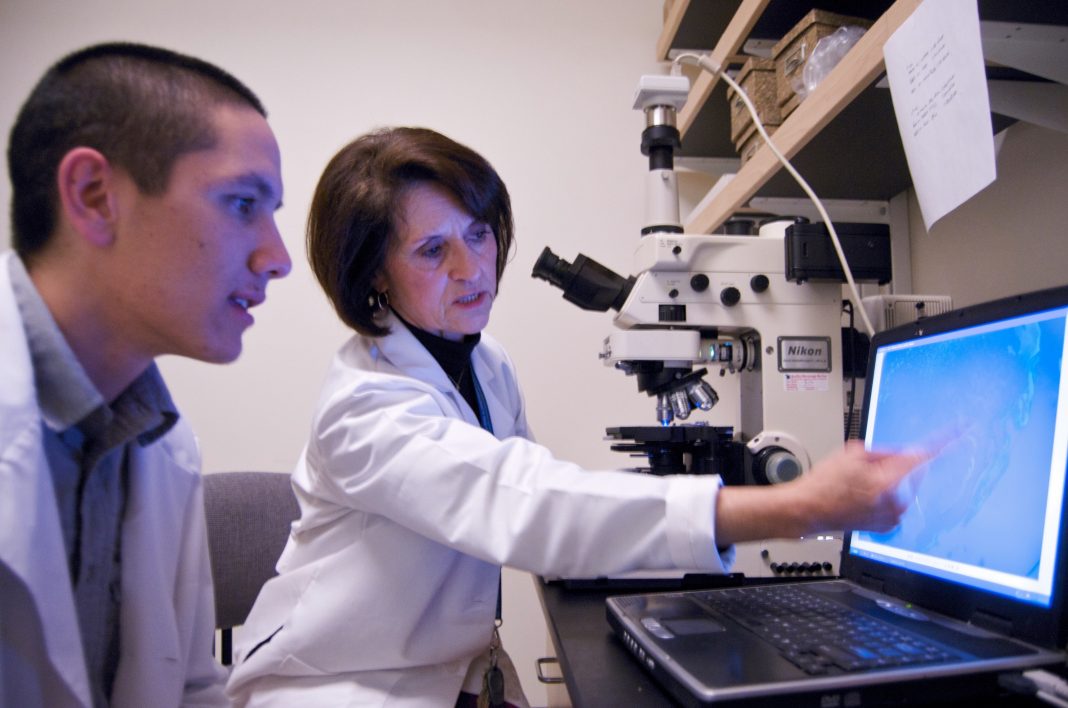Chronic wounds develop due to the defective regulation of one or more of the complex cellular and molecular processes involved in proper healing. Here Manuela Martins-Green explores novel potential treatments for wound chronicity
When a wound does not heal within 4 weeks or once aftercare has been provided, it’s classed as a chronic wound. It is reported that 1-2% of people in developed countries will experience chronic wounds at least once in their lifetime. In the US alone, they impact ~8.5M people and cost ~$28B/year, not accounting for the pain and suffering patients endure, psychologically, physically and financially.
There are several types of chronic wounds: Diabetic wounds develop in diabetic patients and are usually localized to the lower limbs, primarily in the foot, and, hence, the name Diabetic Foot Ulcers (DFUs). Pressure ulcers (bed sores), commonly develop in individuals who suffer from impaired sensation, malnutrition or are confined to a wheelchair or bed. Venous and arterial ulcers develop in individuals with impaired circulation. Other wounds that do not heal may develop from a surgery, an accident, chemical exposure, etc.

What processes are affected in chronic wounds?
Healing of cutaneous acute wounds involves complex processes that occur sequentially in overlapping phases, leading to partial regeneration of the dermal tissue and re-establishment of the epithelial barrier. Upon wounding, the formation of a clot stops the bleeding and releases factors that stimulate various types of leukocytes to come from circulation to the site of the wound (inflammatory phase). The first type of leukocytes to appear are the neutrophils that kill bacteria and, in this manner, prevent wound infection. Following the influx of neutrophils, monocytes arrive at the wound site and differentiate into pro-inflammatory macrophages (M1), which are involved in cleaning the damage caused by neutrophils while also phagocytosing the bacteria. The next set of macrophages (M2) are anti-inflammatory and secrete molecules that promote healing. In addition, keratinocytes proliferate and migrate to close the wound, fibroblasts proliferate and secret extracellular matrix molecules to build the healing tissue and endothelial cells form the microvessels that provide oxygen and nutrients to the new tissue. In the final phase of wound healing, remodeling, surplus cells undergo apoptosis and excess ECM produced is removed by phagocytes that remodel the wound tissue, ultimately resulting in scar tissue.
Acute wound healing follows this path of events. However, when these processes are either stalled or fail to occur in proper order, impaired healing occurs and the wounds do not close properly, the skin barrier is not established, and healing tissue does not form. When this is accompanied with chronic inflammation and infection with biofilm-forming bacteria, the wounds become chronic. Chronic wounds thus develop, at least in part, because of defective regulation of the complex cellular and molecular processes involved in proper healing.
Understanding chronic wound initiation for developing novel treatments
It is still not known what makes a wound become chronic, versus going on to healing properly. Two major reasons for this lack of knowledge are that one cannot experiment on humans, and there is a lack of animal models that mimic chronic wounds in humans.
It is known that human chronic wounds contain high levels of Oxidative Stress (OS). Based on this, we developed a novel and unique mouse model that mimic human diabetic chronic wounds. We used a diabetic, obese mouse model that has a mutation in the leptin receptor (db/db-/-,) and, immediately after wounding, gave them a single treatment of inhibitors specific to the antioxidant enzymes catalase and glutathione peroxidase (GPx). By creating high levels of OS in the wound tissue, we can generate chronic wounds 100% of the time. These wounds become fully chronic 20 days after treatment and form biofilm naturally (as it occurs in humans) – if the mouse survives, these wounds remain open for months.
We showed that increased levels of OS in the wound tissue and biofilm formation are required for wound chronicity. Without increased OS levels, biofilm taken from chronic wounds and placed in freshly made excision wounds cannot create chronic wounds. The high oxidative stress in chronic wounds plays a critical role in altering how the skin microbiome bacteria interact to form biofilm in the chronic wound microenvironment. High levels of OS in chronic wounds lead to the deregulation of gene expression, damage to DNA, proteins, and lipids, a hostile proteolytic environment and cell death resulting in a highly compromised response to injury during the first 48 h of wounding.
Our findings indicate that when OS levels are very high, the function of Nrf2 (a transcription factor that is needed for proper healing) is impaired and neutrophils become ineffective in killing pathogens. By 48 h post- wounding, the wound tissue has very low levels of ATP production, leading to the tissue becoming virtually stagnant. Increased levels of reactive oxygen species, proinflammatory signaling lipids and IL-6 in chronic wounds indicate that inflammation is increased. However, by 48 h after injury, IL-6 decreases; this is a time in which IL-6 plays an important function in stimulating the transition from M1 to M2 macrophages, critical to proper healing.
During hypoxic response in chronic wounds, Hif1α expression is not increased as it is in normal healing, strongly suggesting that Hif1α-activated gene expression of growth factors such as VEGF, PDGF and TGFβ, which are critical for angiogenesis and proper development of the granulation tissue, does not occur normally. Instead, Hif3α is over-expressed in chronic wounds. This transcription factor binds to the hypoxia response element (HRE) for Hif1α in the DNA but is not able to trigger gene expression functioning, in many ways, as a dominant negative factor for Hif1α. Therefore, processes such as those occurring during granulation tissue formation, which are critical for proper healing, do not occur.
The high levels of enzymes that degrade ECM result in its destruction, creating an environment with significant tissue damage not conducive to healing. In addition, the dysfunction in glycolysis and aerobic respiration leads to highly reduced levels of molecules critical for ATP production, which is the critical energy-releasing molecule that supports processes important for cell function during healing. Moreover, catecholamines such as epinephrine, which inhibit re-epithelialization, are present at high levels leading to the inability of the wound to close. The perturbation of all these processes, combined with the lack of ATP, results in wound healing paralyzes.

A potential for reversal of wound chronicity
Success has been limited in treating chronic wounds. Our work points to a novel approach to the treatment of debrided diabetic chronic wounds. During the first 48 h post-debridement, the levels of OS and inflammation in chronic wounds are critical for the initiation of chronic wounds development. The elevated levels of epinephrine prevent reepithelialization and the alterations found in the hypoxic processes strongly suggest that the triggers for angiogenesis do not occur – indeed they are suppressed – and therefore, the wound becomes deprived of nutrients and oxygen. Consequently, the building blocks needed for ATP production, the cell’s energy currency, are not present in sufficient levels to allow for proper cell function needed for granulation tissue formation and re-epithelialization. Under these conditions, cell death ensues, and the wound-healing processes are halted.
Given that most patients with chronic wounds suffer from one or more comorbidities, it is important to treat these diseases simultaneously, if not sometime before initiating wound treatment. The patients should be put on a diet that is rich in products that stimulate energy production to increase the levels of ATP in cells, as well as α-tocopherol (Vit D3) to decrease lipid peroxidation and cell membrane damage and antioxidants to reduce OS.
Because various cell and molecular processes are affected, it is important to use a treatment cocktail to put the wound on a course to healing. We propose that during the first 24 h after debridement, the wound be treated with the following: (1) both antioxidant molecules that eliminate reactive oxidative species and with non- steroidal anti-inflammatory drugs (NSAIDs) to decrease OS caused by pro-inflammatory lipid molecules; (2) an activator(s) of Nrf2; (3) an inhibitor(s) of Hif3α; and (4) an inhibitor(s) of epinephrine to allow re-epithelialization to initiate. At 24 h, the wound should be treated in conjunction with the following: (1) PDGF, VEGF and an inhibitor(s) of Thbs1 to stimulate angiogenesis; (2) inhibitors of cathepsins and other ECM degrading enzymes to decrease matrix degradation; and (3) stimulators of activation of M2 macrophages which are critical for the repair phase of healing.
At this stage, it is important to continue to decrease the levels of OS with antioxidants to decrease the probability of biofilm returning. N-acetyl cysteine (NAC) is a potent antioxidant and in addition, it penetrates some bacterial cells, halts protein synthesis, and leads to bacteria cell death. This should result in preventing biofilm extracellular polymeric substance (EPS) formation. This treatment with small molecules that affect bacterial function, should be coupled to treatment with antibiotics, locally, to kill the remaining planktonic bacteria. This treatment should continue until the wound tissue is forming, and re-epithelialization is occurring.

This work is licensed under Creative Commons Attribution-NonCommercial-NoDerivatives 4.0 International.


